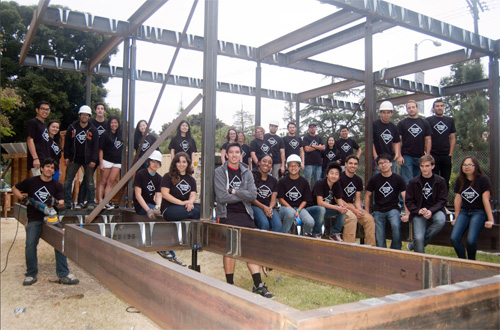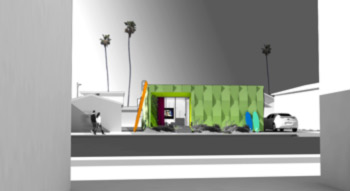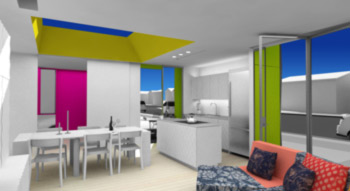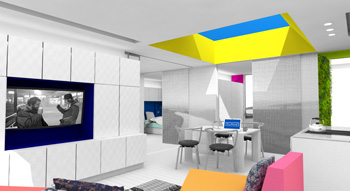The Solar Decathlon: From Architecture Fiction to Architecture Fact
 By Guest Blogger Christine Tanguay
By Guest Blogger Christine Tanguay
In many ways, the 21st Century can be characterized by the phenomenon of technological and cultural change. Yet with the Great Recession barely behind us, many are skeptical to again step forward into the light of these transformations. It requires a stimulus — a great inspiration — to bring about the courage to implement something new. For an architecture student struggling to find her place and identity in an industry of dreamers, this inspiration was found as a result of the 2013 Solar Decathlon competition.
The Solar Decathlon is a collegiate competition started in 2002 by the U.S. Department of Energy and the National Renewable Energy Laboratory (NREL). It challenges students from around the world to design and build solar-powered homes that are energy efficient and affordable.


 For Team USC, we saw this as an opportunity to design a home that would transform the way people interact with their environment and respond to the user’s needs in a way that has never been done before in the built environment. Yet after four years of architecture school designing illustrious, curvilinear forms with no budget (and often no gravity), how would we now design a box of only 1,000 square feet for under $250,000?
For Team USC, we saw this as an opportunity to design a home that would transform the way people interact with their environment and respond to the user’s needs in a way that has never been done before in the built environment. Yet after four years of architecture school designing illustrious, curvilinear forms with no budget (and often no gravity), how would we now design a box of only 1,000 square feet for under $250,000?
The answer is: carefully. Many say that architects never stop designing, and I will say that in my limited experience, this is Architecture Fact.
For the last year and a half, our team of dedicated architecture and engineering students has meticulously poured over the designs of this tiny house in more than 100 pages of construction documents and more than 300 pages of specifications in our Project Manual. We filled all of the primary roles on a project team: Project Manager, Project Engineer, Construction Manager, etc. and have worked with some of the best industry consultants to purge our glamorous desires for the reality of hard dollars and cents. The Solar Decathlon has given us knowledge, experience and most of all, it has taught us what true passion can accomplish when challenged—an ever-important lesson for students.
The result of our efforts is a prototype, called fluxHome™, which celebrates constant change and innovations. Designed as a viable alternative to the tract house with affordability and energy efficiency in mind, fluxHome™ combines a transformable envelope system with off-the-shelf, mass-customizable components and smart home technology, allowing it to be configured as a starter home for a family of four or adapted to suit a multitude of different lifestyle scenarios. We see it as a method to affect change for the future that is not limited to the confines of competition timelines or rules.
Following the 2013 Solar Decathlon competition, USC’s fluxHome™ will return to the University Park Campus to be reassembled, so that it may serve as a Living Lab for Downtown or Southern Los Angeles students and the community at large. However, the final plan for fluxHome™ is to see our design in action as a home for a Los Angeles area family. With the help of the Los Angeles Department of Water and Power, the house will be permanently relocated in the vicinity of USC as a residence for a family of four. Ultimately, as architects, we design spaces for people, and to know that fluxHome™will one day become a family’s home makes our efforts especially important and enjoyable.
You might then ask what will happen to the students who worked on the prototype – where will they go and what will they do? Some will stay behind to finish their education, others will pursue a Master’s program or change disciplines altogether. A few of us, myself included, will jump feet first into the “real world” having just barely grasped the magnitude of the difference we can make as a part of an integrated design team.
The old way of individual genius is Architecture Fiction. The new way of the world is to embrace the team and without fear, trusting that it will guide you to success. That is Architecture Fact.
Christine Tanguay, LEED AP BD+C, is a Technical Designer for integrated sustainable design firm, LPA Inc., and specializes in K-12 facilities.
